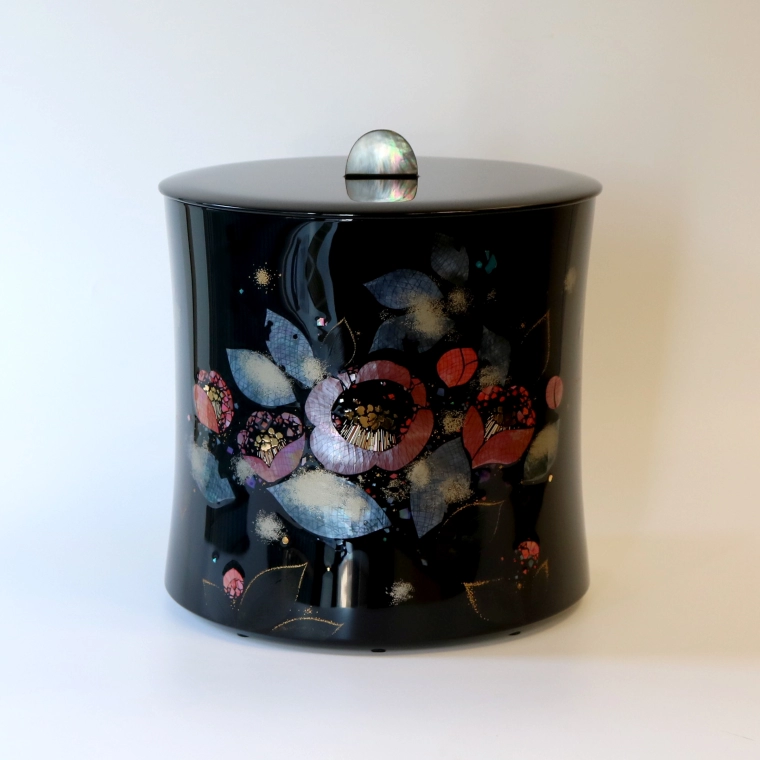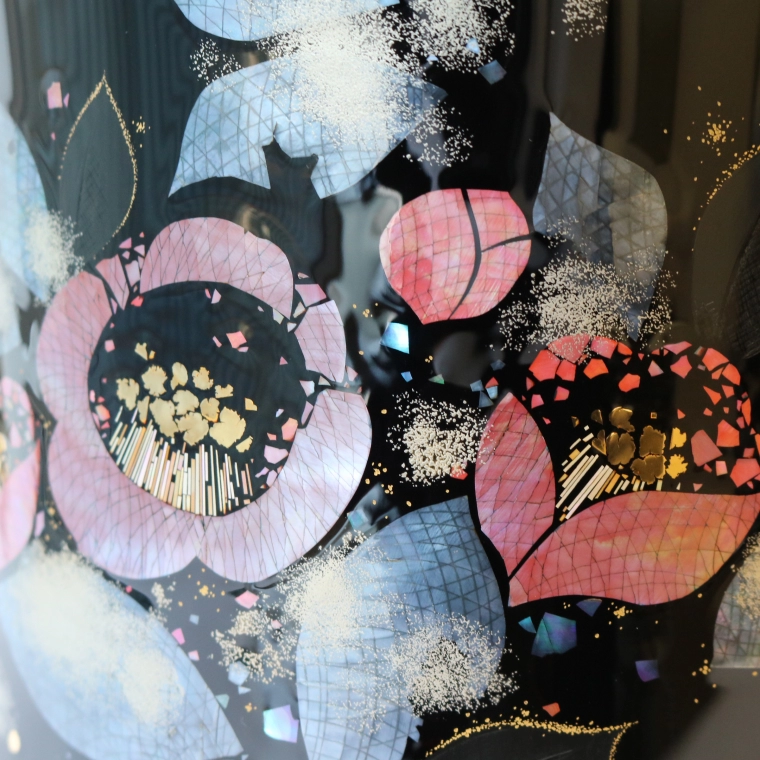Box with Camellia Design in Mother-of-Pearl Inlay "Camellia of Memories"
H 21.0 / ø 19.1 cm,Year.2006- according to today's currency rate
- shipping fees not included
Keiji Onihira
1973 -- Lacquerware
- Price Range Please Inquire
- Awards at Japan Kōgei Assoc. Exhibitions : 4
About the Artwork
Exhibited and available for purchase at Hotel Chinzanso Tokyo, the Executive Lounge "Le Ciel" (lounge exclusive for suite room guests)
Exhibition Period:From Jan. 28th 2025 to the end of Jul. 2025
* If you wish to purchase, please note that you will receive the purchased items after the exhibition period
From the Author:
I made this piece to express that there is a bright future ahead of us with this design of a camellia blooming in the cold winter snow, waiting for the warm spring to come.
Description
-
CategoryLacquerware
-
MaterialsUrushi lacquer, Hemp cloth, Great green turban shell, White-lipped pearl oyster, Black-lipped pearl oyster, Gold powder, Platinum powder, Pigments
-
DimensionsH 21.0 / ø 19.1 cm
-
Year presented2006
-
RarityUnique
-
Artist SignatureSigned (artwork)
Techniques Used
Dry lacquer
For works of dry lacquer (kanshitsu), first a clay form is created and plaster is used to take a mold of the form. Next, repeated layers of hemp cloth and lacquer are applied to the mold until they are built up to the desired thickness. Finally, the mold is removed and additional coats of lacquer are applied to finish the piece. The hemp fibers are strengthened when the lacquer bonds with them, making dry lacquer an excellent technique for creating sturdy forms with a significant degree of freedom.
Maki-e
Maki-e (literally “sprinkled pictures”) is a representative lacquerware technique that originated in Japan around 1,200 years ago. Maki-e is done by painting lacquer motifs on the surface of a piece using a fine brush and then sprinkling gold powder onto the lacquer before it hardens, producing luxurious decorations.
Mother-of-pearl inlay (Raden)
Mother-of-pearl inlay (Raden) is a decorative technique that uses the iridescent inner layer of abalone shell, turban shell, pearl oyster shell, or other mollusk shells. The technique came to Japan from China 1,300 years ago, and pieces featuring mother-of-pearl inlay are included among the artifacts at the Shōsōin Repository in Nara.
Chinkin
For chinkin (“sunken gold”), a chisel or knife is used to incise lines and dots into a lacquered surface. Gold leaf or fine gold powder is then inlaid into the grooves, creating a fine and delicate design.
Awards received
- 40th Wajima City Art Exhibition
- Wajima Crafts Association Award


